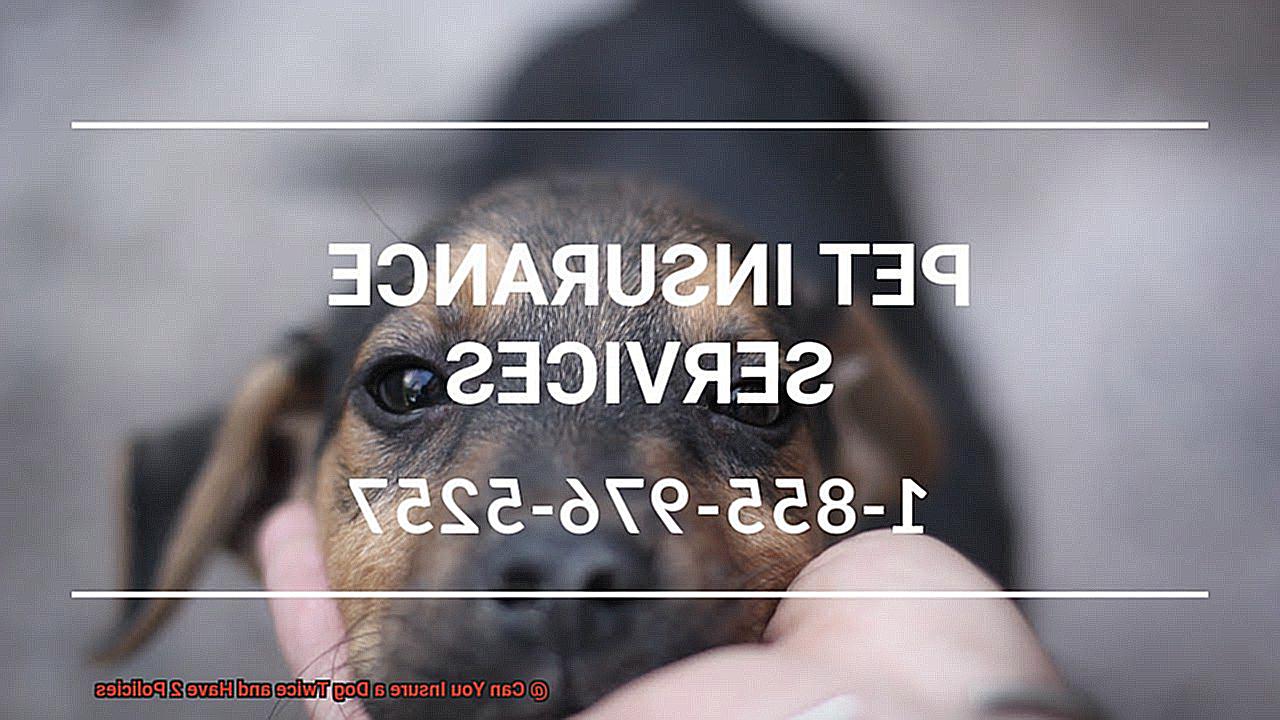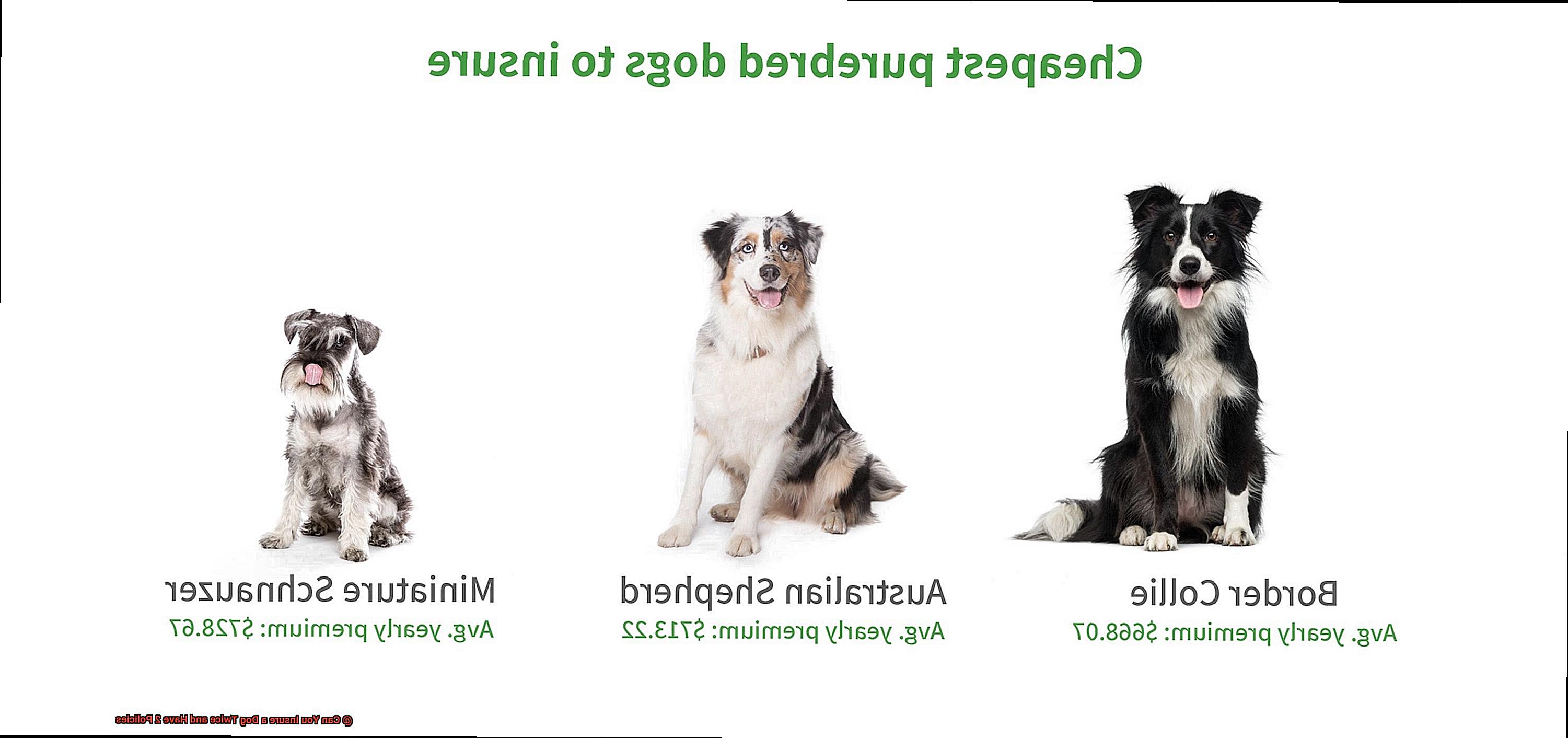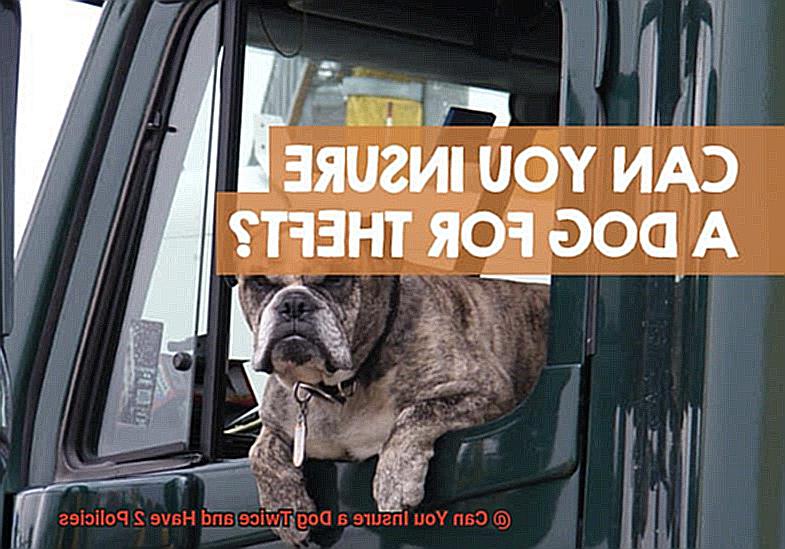Can You Insure a Dog Twice and Have 2 Policies?
Are you a proud dog owner who wants to ensure the best possible care for your furry friend? If so, pet insurance is an essential investment. But have you ever wondered if it’s possible to have two pet insurance policies for a single dog?
As pet owners, we always strive to provide the best protection and care for our four-legged companions. Having multiple insurance policies may seem like a smart strategy, but is it legally feasible? This common query can be difficult to answer, which is why we’re here to help.
In this blog post, we’ll dive deep into the legalities and practicalities of pet insurance and tackle the most frequently asked questions about insuring dogs twice. We’ll explore what’s covered in dog insurance policies, how to find the right policy, and whether or not you can insure a dog twice.

So if you want to become a pet insurance expert and learn more about how to ensure your furry friend receives top-notch care, stay tuned. We’ve got all the answers you need.
What Is Double Insurance for Dogs?
Contents
- 1 What Is Double Insurance for Dogs?
- 2 Pros and Cons of Double Insurance for Dogs
- 3 Is It Legal to Have Two Policies for the Same Dog?
- 4 What Are the Potential Drawbacks of Having Two Insurance Policies?
- 5 How to Choose the Right Pet Insurance Policy
- 6 Tips for Finding Affordable Pet Insurance
- 7 Conclusion
That’s why you may be wondering if having double insurance for dogs is a smart move. While having two insurance policies in place for the same pet is possible, it’s important to understand both the benefits and potential drawbacks.
One of the primary advantages of having double insurance for dogs is the added layer of protection it provides. For instance, if one policy doesn’t cover a specific medical condition or procedure, the other policy may pick up the slack. Additionally, if one insurer denies a claim, the other insurer may still provide coverage for the same claim.
However, there are some potential negative aspects to consider as well. For starters, having two policies can be quite expensive. Each policy comes with its own premiums and deductibles, which can quickly add up. Furthermore, some insurance companies may not allow you to have multiple policies for the same pet.
Another factor to keep in mind is that having double insurance for dogs doesn’t necessarily mean double the coverage. In fact, some policies may overlap or have exclusions that leave you with less coverage than expected.

Furthermore, coordinating between two insurers can be frustrating and time-consuming. Some insurers may even require you to disclose any existing policies you have in place, and neglecting to do so could result in a denial of coverage or cancellation of policies.
Ultimately, whether or not double insurance for dogs is right for you depends on your individual circumstances and needs. It may be beneficial in certain situations, such as if one policy has limitations or exclusions that another policy covers. Nevertheless, it’s crucial to review each policy carefully and consider all potential costs and limitations before making any decisions.
In conclusion, while having double insurance for dogs can provide additional peace of mind and protection for pet owners, it’s essential to weigh both the benefits and drawbacks before committing. Be sure to review each policy in detail and communicate frequently with your insurers to avoid any potential issues.
Pros and Cons of Double Insurance for Dogs
One possible solution is double insurance for dogs, which means having two policies for the same pet. While this may appear to be a smart way to guarantee maximum protection, it’s crucial to understand the pros and cons before making a decision.
Let’s begin with the pros of double insurance for dogs. Firstly, it provides increased coverage. If one policy does not cover certain conditions, the other policy might cover them. This can give dog owners peace of mind, knowing that their furry companions are shielded in case of any unforeseen circumstances. Secondly, having two policies in place ensures that there are no holes in coverage. If one policy expires or is cancelled, the other policy will still be valid, providing continuous coverage for the pet. Lastly, having two policies gives dog owners more choices when it comes to selecting the best coverage for their pets. They can compare policies from various providers and choose the one that offers the most comprehensive coverage at a reasonable price.
Now let’s take a look at the cons of double insurance for dogs. Firstly, it means paying twice the premiums, which can be quite expensive.
It’s important to carefully consider if the additional cost is worth the added benefits. Secondly, some policies may overlap in coverage, which means that having two policies may not provide any additional benefit. It’s essential to carefully review policy documents to ensure that there is no overlap in coverage. Lastly, filing claims with two insurance companies can be time-consuming and complicated.
Dog owners need to keep track of two sets of paperwork and ensure that both companies are informed about any changes in the pet’s health condition.

Is It Legal to Have Two Policies for the Same Dog?
As an expert, I’m here to provide you with all the information you need.
Firstly, let me assure you that it is legal to have two policies for your furry friend. However, there are some limitations. Insurance companies commonly have clauses that prevent overlapping coverage. This means that if you already have a policy that covers certain medical conditions or accidents, you cannot purchase another policy covering the same conditions or accidents. It’s like trying to put on two raincoats at once – not only is it uncomfortable, but it’s also unnecessary.
Having multiple policies for your dog can also lead to confusion and potential fraud issues. Pet owners could try to profit by filing multiple claims for the same incident. No one wants their furry friend’s health and well-being compromised by fraudulent activities.
On the bright side, there is a way around this. You can acquire two policies that cover different aspects of your dog’s health and well-being. For example, one policy may cover accidental injuries, while another policy covers routine preventative care such as vaccinations and check-ups. It’s like having a raincoat for rainy days and a sunscreen for sunny days.
It’s critical to remember that insurance companies may require disclosure of any other policies you have for your pet. Inaccurate information could result in denial of claims or cancellation of policies. Honesty is always the best approach.
What Are the Potential Drawbacks of Having Two Insurance Policies?
However, having two insurance policies for your furry companion might not be as great as it sounds. Let me walk you through some of the potential drawbacks to consider before making your decision.
One major issue with having double coverage is confusion and complications when filing claims. If both policies cover the same conditions, it can be challenging to navigate which policy to use and how to file the claim. It’s like wearing two raincoats on a rainy day – uncomfortable and unnecessary.
Moreover, having multiple policies can be expensive. Paying double premiums can quickly add up and may not outweigh the benefits of having two policies. You don’t want to end up spending more than necessary, so carefully assessing the benefits and costs is crucial.

Another potential downside is longer wait times for reimbursement and more paperwork to fill out. It could be frustrating and time-consuming, especially when filing claims for the same treatment covered by both policies. It’s like carrying two umbrellas on a sunny day – unnecessary and cumbersome.
In some cases, one policy might deny a claim if they find out that another policy covers the same treatment. It’s important to review each policy’s terms and conditions thoroughly to avoid such situations. You don’t want to be caught off guard, thinking that you are fully covered only to find out that you are not.

Lastly, having two policies may lead to a false sense of security. Owners might assume that having two policies means they are fully covered, but this may not necessarily be the case. It’s important to carefully review the terms and conditions of each policy to ensure that all necessary coverage is included.
How to Choose the Right Pet Insurance Policy
However, with so many policies available, it can be overwhelming to choose the right one. Fear not. Here are five key factors to consider when selecting the perfect pet insurance policy.
Breed-Specific Coverage
Different breeds of dogs have unique health needs and risks. Therefore, it’s essential to choose a policy that covers your pet’s breed. Some policies exclude certain breeds or conditions, so make sure you read the fine print.
Coverage Limits
The last thing you want is to be caught off guard with inadequate coverage. Ensure you choose a policy that provides enough coverage for your needs, including annual limits and incident limits.
Deductibles and Co-Payments

Deductibles and co-payments can vary significantly between policies, so it’s important to choose a plan with terms that suit your budget. While a higher deductible results in lower monthly premiums, it also means more out-of-pocket expenses in an emergency.

Reputation of the Provider
When it comes to pet insurance, you want a provider who will be there for you and your pet in times of need. Look for providers with high customer satisfaction ratings and positive reviews online.
Read the Fine Print
Before signing up for any policy, carefully read the terms and conditions to fully understand what’s covered and excluded. Be aware of any exclusions or limitations as they may impact your claim in the future.
Tips for Finding Affordable Pet Insurance
While pet insurance can help with unexpected veterinary costs, finding affordable coverage can feel like a daunting task. But fear not. Here are five tips to help you find affordable pet insurance that meets your pup’s needs.
Shop Around
When it comes to pet insurance, it pays to shop around. Don’t settle for the first policy you come across. Take the time to compare prices and coverage from different providers. Think of it like trying on different outfits before making a purchase – you want to find the best fit for your budget and your dog’s needs.
Consider a Higher Deductible
Just like with human health insurance, opting for a higher deductible can lower your monthly premium costs. However, make sure that the deductible amount is still manageable in case of unexpected veterinary expenses. It’s like choosing to cook at home instead of going out – it may require more effort upfront, but it can save you money in the long run.
Look for Discounts
Some pet insurance providers offer discounts for insuring multiple pets or signing up for automatic payments. It’s like finding coupons or promo codes to use at your favorite stores. Make sure to ask about any available discounts when comparing policies.
Choose a Plan that Fits Your Dog’s Needs
If your dog is older or has pre-existing conditions, a more comprehensive plan with higher coverage limits may be necessary. On the other hand, if your dog is young and healthy, a basic plan may be more cost-effective. Think of it like choosing shoes – you want to find the right fit for the occasion.
Read the Fine Print
Before signing up for pet insurance, make sure to read the policy’s fine print and understand any exclusions or limitations. It’s like reading reviews before making an online purchase – you want to know exactly what you’re getting.
PNqlr8shIYA” >
Conclusion
In conclusion, pet insurance is a must-have investment for every dog owner who wants to ensure their furry friend receives the best possible care. While it’s legally possible to have two pet insurance policies for one dog, it’s important to understand the benefits and potential drawbacks before committing. Double coverage can provide extra peace of mind and protection, but it can also be costly and involve a complicated claim process. Therefore, reviewing each policy carefully and considering all potential costs and limitations is crucial.
When selecting the right pet insurance policy, several key factors must be considered. These include breed-specific coverage, coverage limits, deductibles and co-payments, provider reputation, and reading the fine print. By taking these factors into account, you’ll find a policy that suits both your pet’s needs and your budget.
Finding affordable pet insurance may appear daunting at first glance. However, shopping around, considering a higher deductible or looking for discounts can help you locate an affordable plan that meets your pup’s needs. Remember that investing in pet insurance is investing in your dog’s health and well-being.




